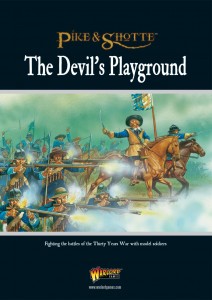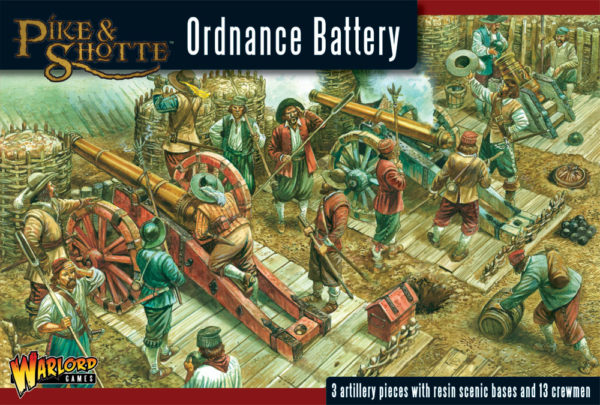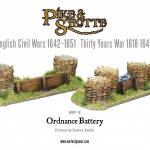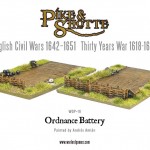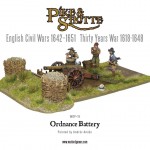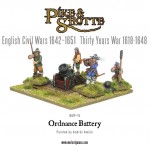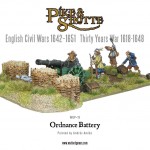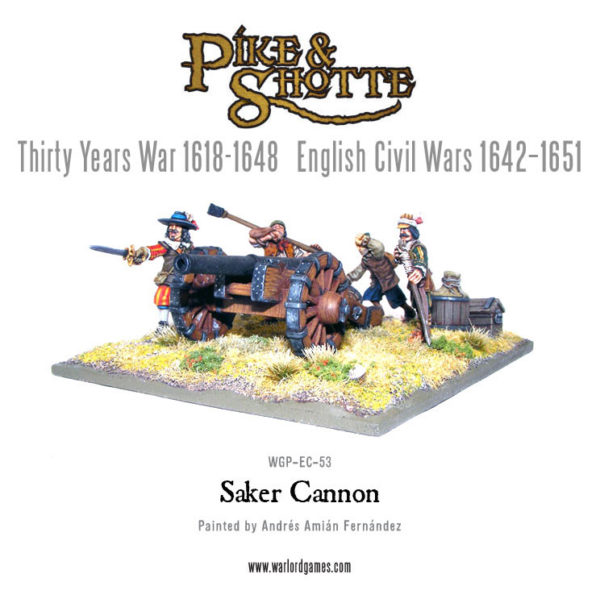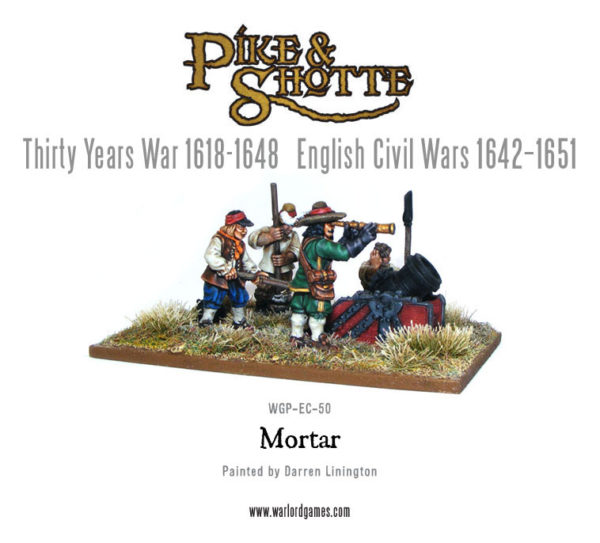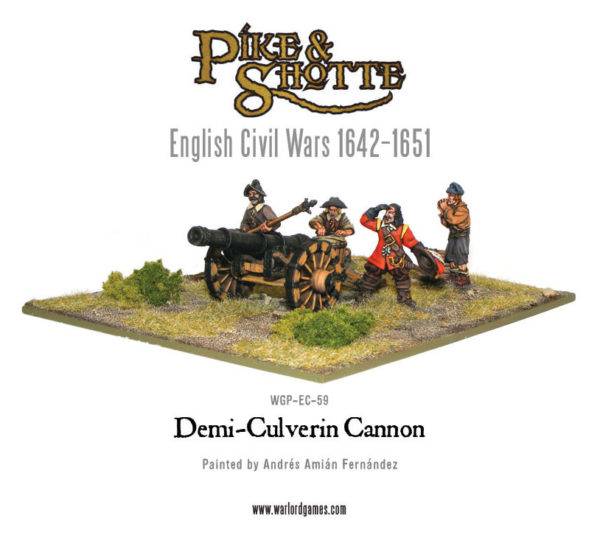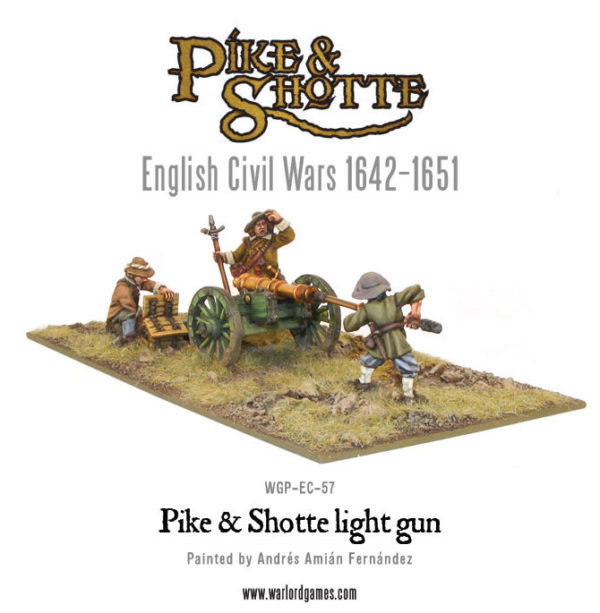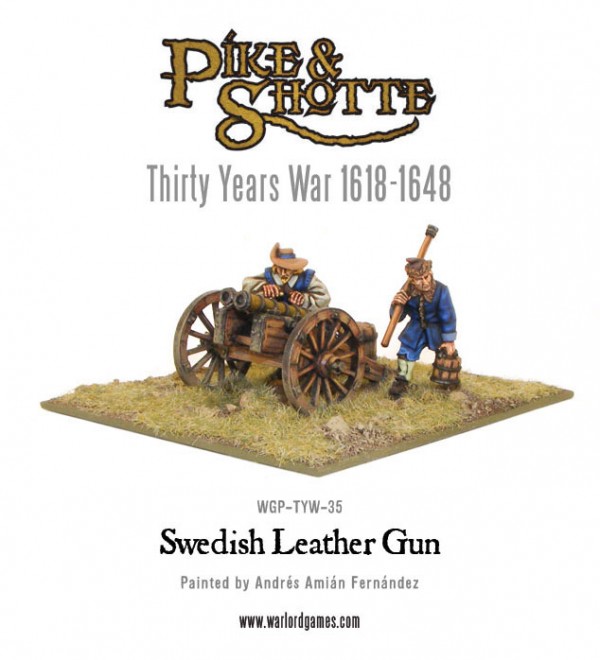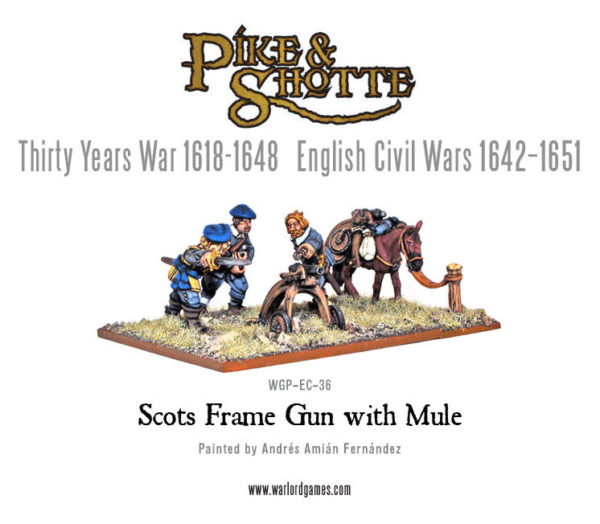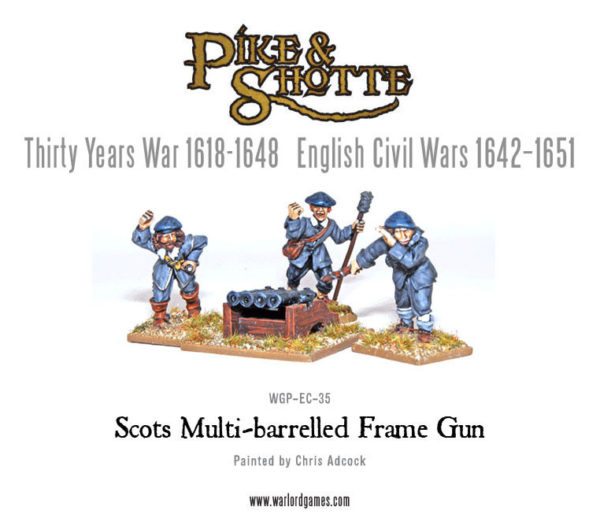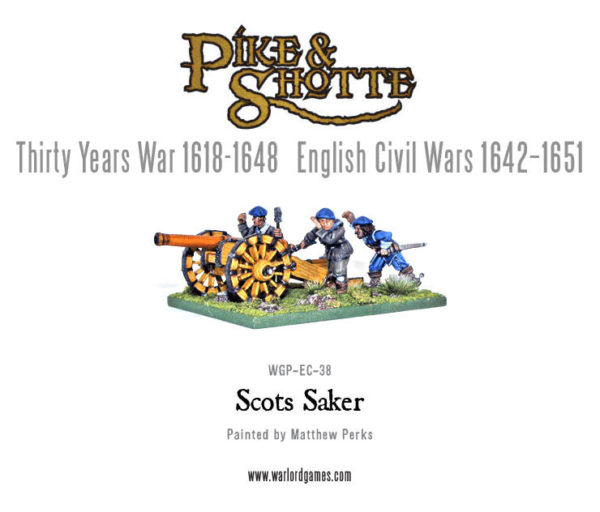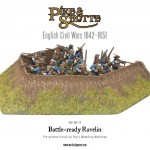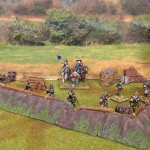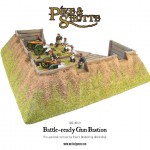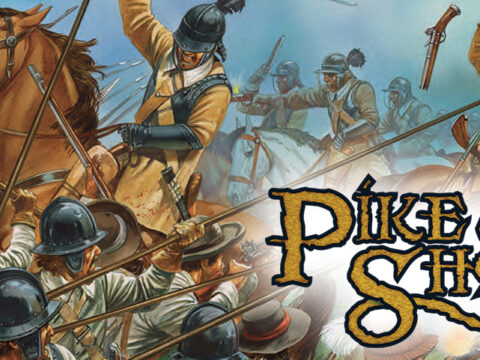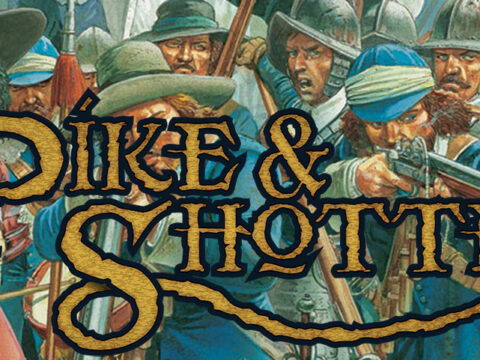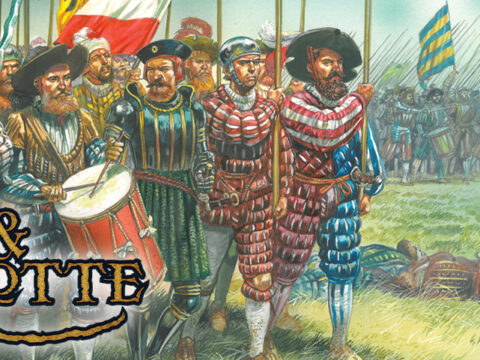Last Friday, we released the Pike & Shotte Ordnance Battery set – offering some serious fire support for armies of the 1500 – 1700 period. The set contains three guns, and a host of resin defences to keep them safe from incoming fire…
We thought we’d take the opportunity to look back through the Warlord arsenal – to review what’s on offer, and prepare us for the incoming Thirty Years War supplement, The Devil’s Playground!
Saker Cannon
The Saker was the mainstay of the artillery park. Large and fearsome enough to pound the enemy in the field and also manageable (just!) so that it could arrive on the battlefield. We forget today that 350 years ago in Britain few had seen the savage effects of gunpowder weapons let alone heard such a terrific noise as a Saker giving fire!
Crewed by a couple of specialists and a team of labourers who had to swab the gun and haul it back into position after each shot, artillery were much valued by generals of both sides. Their material effect on the enemy was often negligible, but the morale effect profound.
Mortar
There were few more terrifying weapons in the 17th Century than the fearsome blast of the mortar bomb. Employed largely at sieges, mortars spat their fizzing, hissing shells high into the air, clearing the tallest walls or towers to crash into streets or houses below before exploding in a shattering blast.
They terrorised garrisons and townsfolk alike, sometimes leading to the civilians petitioning the city’s governor to surrender and avoid any further damage.
Mortars were however used quite rarely, as they required a skilled crew to set the fuses, and lob the shells accurately without blowing themselves to kingdom come!
Demi-Culverin Cannon
The Demi-culverin was a medium cannon similar to but slightly larger than a Saker – and was developed in the late 16th century.
Barrels of demi-culverins were typically about 11 feet (3.4 m) long, had a calibre of 4 inches (10 cm) and could weigh up to 3,400 pounds (1,500 kg). They would fire an 8-pound (3.6 kg) round shot (though there were heavier variants firing 9-pound (4.1 kg) or 10-pound (4.5 kg) round shot) – and had an effective range of around 1,800 feet (550 m).
Demi-culverins were often used in sieges for wall and building demolition (or simply to smash the enemy battleline!) – they were valued for their range, accuracy and effectiveness.
Light Gun
Light cannon were by far the most numerous of the artillery on the 17th century battlefield. The Sakers and Culverins may have made a huge noise and scare away green troops just by the sound of their discharge, but the real killing was most often done close up, with small but heavy iron balls, hail shot (an early form of grape shot), or canister.
The big guns were immobile once emplaced on the field, assuming, because of their bulk, that they even arrived in the first place! These lighter guns needed horses to take them on the poor road systems, but once on the field of battle, could be moved around by sweating gunners, mattrosses and attached labourers to lend their firepower where their general needed it most.
They were often parcelled out to regiments for specific purposes whilst the larger guns sat in battery under a unified command.
Guns were hugely expensive things to make and campaign with, so woe betide the general who lost his guns – they had a great effect at times on troops who had never heard a sound quite like it before.
Swedish Leather Gun
The leather cannon, or leather gun, was designed from the desire to build a light and cost effective weapon that would help fill the gap between the portable musket and the more static heavy cannons in use at the time. The gun’s odd name comes from the varnished leather that acted as a protective surface layer of the piece.
Swiss and Austrian engineers were believed to have been the first to develop the Leather Gun. King Gustavus Adolphus of Sweden, used them during the Polish–Swedish War of 1626–1629. Leather guns also saw plenty of action during the English Civil Wars in the mid-17th century, especially in Scotland.
Gustavus Adolphus’ tactics were based around the effective use of firepower, and whilst heavy cannon were effective during the early stages of a battle, they could not be moved from their initial deployment position. As such, the artillery could not respond effectively to developments in battle – but this new, lighter style of cannon now made this possible.
Scots Frame Gun
The Scots Covenanters fielded a huge array of artillery, ranging from huge siege pieces to tiny mobile “murderers” or frame guns. These are simple, small barrels attached to a sturdy wooden supporting frame, hence the name. Crewed by a just three or four men, they could be wheeled or indeed carried around on the battlefiled in a handy manner, firing a light cannon ball or as often, we think, hail shot.
Scots Multi-Barreled Frame Gun
Scotland might not have been one of the richest lands in Europe, but when its well organised army marched to war, it went well equipped with artillery in quantity and in many forms.
The Frame gun was a Scots favourite. Small, compact, and easy to manoeuvre, frame guns came in all shapes and sizes. They could be single barrelled, double-barrelled or even quadruple barrelled as is our Warlord gun!
They could be towed by mules, packed in carts or dismantled and carried by pack animals, making them very versatile, as artillery was frequently lost on campaigns or reaching the battlefield too late to make a difference.
Frame guns could fire round shot or hail shot and were able to keep up a quick rate of fire. Scots armies seemed to field many of these useful machines of destruction, indeed some people called small guns such as these ‘murderers’.
Scots Saker
Bring the mainstay of contemporary artillery, the Saker was used by many different forces – we have sculpted a specific Scots crew in order to better serve the highland forces!
Defences
Don’t forget – your guns will need some cover. We’ve bundled together the excellent new Ordnance Battery – which includes not only three guns, but also a whole host of resin defences…
Gun crews would do whatever they could before the start of battle to prepare a more defensible position – piling earth in front of their guns in order to absorb incoming fire – check out the Pike & Shotte Terrain section of the Warlord webstore to see what’s on offer!
Our new Pike & Shotte supplement, The Devil’s Playground, covers the Thirty Years War – a series of conflicts that ravaged large areas of Europe, especially the German provinces, from 1618 to 1648. These conflicts centred on the Habsburg Holy Roman Emperors, Ferdinand II and Ferdinand III, and their opponents.
Although viewed by many as a religious war between Catholic and Protestant nations, its roots and causes were also politically motivated. The combination of religious fervour and the political ambition of the European superpowers were to pit vast armies and mighty leaders against each other. The devastation caused by decades of fighting had truly turned Europe into the ‘Devil’s Playground’.
